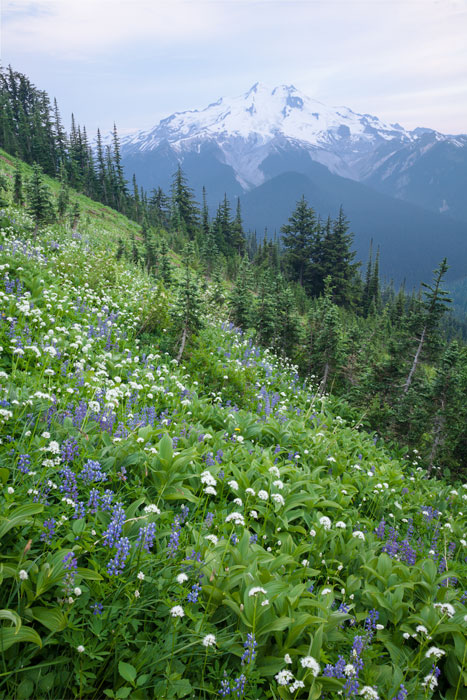
July 2013
Okanogan National Forest, WA, USA
Canon 5D MkII & EF 24-105mm f/4L IS USM, 1.5s + 0.5s f/16 ISO400 @28mm
Dick and Olivia. Nice couple. Outgoing and giving off sympathy the former, quieter and more reserved the later. Met them several times over a few days time, as we were all walking the same route. Two nights with our tents within sight of each other were enough for Dick to tell me several interesting stories (more on that later) about their life, get to know each other, and take a few pictures together.
First time here for me, but second for them, who had walked the same thirty-six sawtooth miles (side trips excluded) for their honeymoon, some thirty-five years earlier. That tells you a few things about them. First of all, you can bet that Dick is a lucky man, and if you do not agree try convincing your fiancee of exchanging a warm sunny beach full of palms with this bug infested chunk of wonderland in the North Cascades. Second, these guys were at least two decades farther away from their first hiking trip than myself, which says a lot about their stamina and backpacking abilities, but not so much about my physical shape. During the long and relentless climb to Buck Creek Pass, from where the above photo was taken, I could only think about how in the world was I suffering so much in the same place where I knew that a couple of senior citizens had gone through the day before.
At 10525 feet, Glacier Peak is the lowest and least known of the Washington State volcanoes. Located deep into the wilderness, it is not easily visible from civilization, which was the main reason why I decided to tackle this hike. Being midsummer, the first thing that surprised me upon setting my eyes on it was the amount of ice that covered it, quite amazing for a mountain not so high but understandable given the incredible amounts of precipitation that drown this area. Whoever named the mountain did not need much inspiration after all. After staring at the volcano for a few minutes, I noticed that there was something intrinsically different about this one. It is somewhat difficult to explain, but I will try.
In general, volcanoes rise over their surroundings, minimizing everything around, and you always end up staring at them from below not paying attention to anything else. But not with this one. The melting ice and snow from Glacier Peak glaciers is captured by only two rivers that encircle the volcano, which differs markedly from the classical star pattern of creeks radiating away from a mountain in every direction. While the White Chuck River covers the southwest drainage, the incredible Suiattle River is born on the southeast of the volcano (left side of the image), and flows north (left to right on the photo) and then west before heading toward Puget Sound and the Pacific Ocean. The wide, deep, forested, and completely wild Suiattle Valley is an impressive sight, even more when you consider that it is less than 70 miles away from downtown Seattle. Maintaining this huge valley without a single road so close to so many people is a testament to the wisdom and efforts of lots of people, whom I can only sincerely thank. While leaving Glacier Peak to its left, the Suiattle River is flanked on its right side by a more or less continuous ridge with many peaks not much lower than the volcano itself. And that is precisely what sets Glacier Peak apart. You do not look "up" towards it from a valley, you look "across" straight ahead over a valley, as shown above. It all looks like a giant circular ripple wave, with the volcano going up in the middle, the Suiattle Valley circling it, and then the ridge encircling the valley. Quite unique, and uniquely beautiful.
Which brings us back to Dick. An experienced mountaineer, Dick has for many years explored the North Cascades, accumulating an encyclopedic knowledge of most of its trails, traverses, and climbing routes. He has climbed many different peaks in these mountains, including all the volcanoes. All except one. Curious that the lowest one is the most challenging. Too difficult to get there, he told me. Too inaccessible.